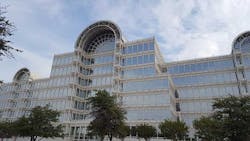Blockbuster data center leasing isn’t just a Northern Virginia phenomenon anymore. As hyperscale operators continue to consume capacity, multiple markets around the country are starting to see super-sized leasing at a scale previously seen only in “Data Center Alley” in Ashburn.
The latest region to see boffo results is Dallas/Fort Worth, which had 286 megawatts of absorption in the first half of 2022, according to new research from real estate firm Cushman and Wakefield. The strong Dallas activity follows a JLL report of mega-scale leasing in Phoenix, where it reported 257 megawatts (MWs) of absorption in the first six months of 2022. Meanwhile, the emerging hyperscale hub of Hillsboro, Oregon had 199 MWs of pre-leasing in the second half of 2021, according to CBRE.
Leasing in the hundreds of MWs was previously seen only in Northern Virginia, known as the “home of the cloud” for the enormous concentration of infrastructure to support the growth of Amazon Web Services, Microsoft, Google and Meta. In some years, absorption in Loudoun and Prince William counties dwarfed the combined leasing in all other U.S. regions
That dynamic has changed as data center leasing has kicked into warp speed in 2022. Hyperscale operators are planning larger deployments in markets beyond Virginia, and provisioning large-scale capacity to keep pace with the growth of the digital economy, which has been accelerated by pandemic-related shifts in business activity, including greater reliance on video and a more distributed workforce.
The data center industry has been setting records for absorption in 2022 as hyperscale operators race to procure cloud capacity for long-term growth. Activity has been accelerated by concerns that delivery of future capacity may be slowed by supply chain disruptions, which are beginning to cause more delays in data center construction.
Big Dealings in Dallas
Dallas saw roughly 5 times the annual amount of leasing in the first half of 2022, said Bo Bond, Executive Managing Director for Cushman & Wakefield. Meta signed leases with three operators in the Dallas-Fort Worth region for more than 225 megawatts of data center capacity in the first half of 2022, Cushman reported.
Get the DCF Dallas Market Report.
Those huge numbers are part of why we’re seeing a surge in data center construction in Dallas/Fort Worth. Here are some details:
- Compass Datacenters recently filed plans revealing an additional 250,000 SF data center at its growing hyperscale campus in Red Oak, Texas, one of several projects where Compass is building multiple large sized data centers.
- QTS plans to invest $180 million in an expansion of its campus in Irving in the Dallas market, filing plans to build a 337,000 square foot data center building on land adjacent to its existing campus in Irving.
- Aligned Data Centers has announced plans to expand its campus in Plano, adding a 36 MW data center on an existing campus. The DFW-02 facility will be 220,000 SF, with 185,000 SF of data hall space.
- Digital Realty has filed plans for a new data center on land it owns in Lewisville. Named “Project Gold,” the facility will feature 183,000 SF of data center space.
“DFW is experiencing a record year of data center absorption as it continues its growth as a vital interconnection hub for major cloud providers, large financial and insurance firms, and top-tier technology companies,” said Andrew Schaap, CEO of Aligned. “The region’s booming industrial market, dense and diverse connectivity infrastructure, access to talent, pro-business environment, and abundant and affordable power, make Dallas an ideal location for Aligned to further expand its hyperscale data center campus footprint.”
With super-sized deals come super-sized challenges. As in other markets (especially Virginia and Dublin), the accelerated growth in Dallas may soon test capacity of the region’s utility infrastructure.
“Dallas is supply constrained through 2023,” said Curt Holcomb, Executive Vice President for JLL in Dallas. “We’re seeing an interesting supply/demand market that we’ve never seen before. We’re starting to look at bigger and bigger developments. That may mean new (power) transmission lines.”






